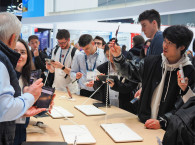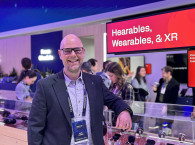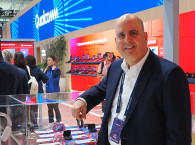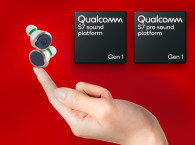There were many years where I sincerely questioned why I should attend a trade show such as Mobile World Congress representing audioXpress. And the actual experience usually would temper any such doubts given the extremely high level of contacts and opportunities, and because of the specific companies that we could only meet at MWC Barcelona. Of course, as happens at CES, it's not exactly easy to ensure those high-quality meetings will take place. But unlike CES, where the number of daily meetings and event requests are just overwhelming, covering MWC with an audio focus enables a more relaxed schedule of quality time with intended exhibitors, with plenty of time to explore the show floor, meet many walk-only attendees, and high-value networking.
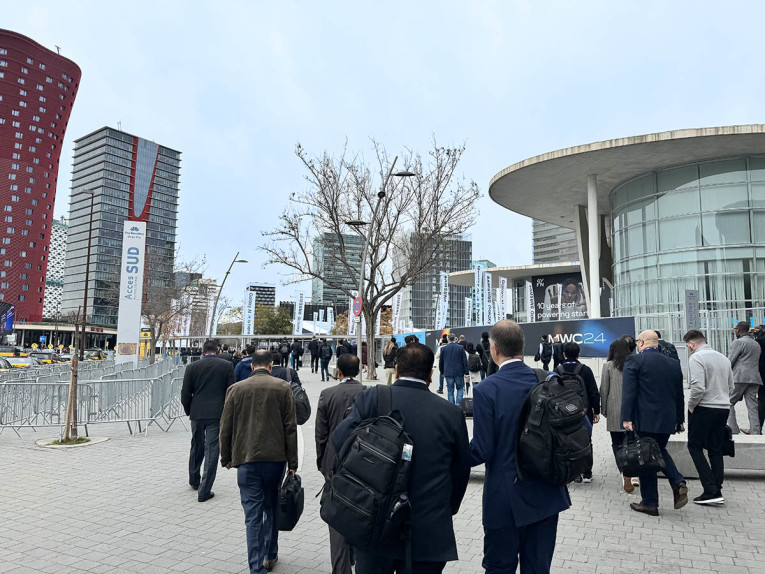
Also, a big difference between this show and CES is that everything happens in a single place - the massive trade show complex of the Fira de Barcelona, conveniently located between the airport and the city itself. Of course, there are also events outside of the Fira complex, including press events, but that is usually something that happens before the show opens and during the first show day, where it is advisable to stay out of the busiest areas of the show floor anyway.
I wrote about the MWC experience in previous years (recommend my last pre-pandemic report here), but honestly I attended this year once again with the lowest of expectations. In 2023, the first edition that truly brought back the event from the pandemic impact, MWC was worth it mainly to attend the first-ever Auracast Experience and access the impact that Bluetooth updated specifications and specifically LE Audio was having on the mobile industry (not much yet, it turned out).
My main reason to attend this massive telecom and mobile technology event has been a side focus on audio for mobile platforms, connectivity, and wireless technologies, and of course wearables and particularly true wireless earbuds and hearables. Before even CES caught up, it was at MWC in Barcelona that the hearables trends were visible for the first time.
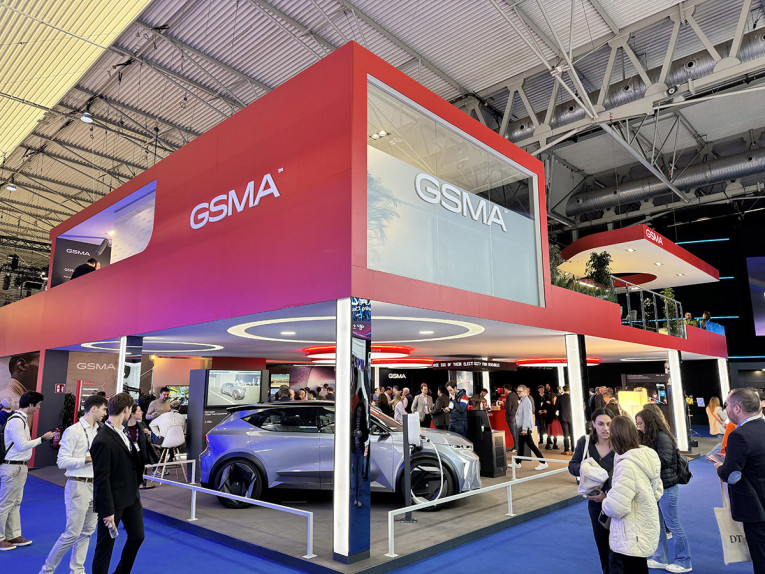
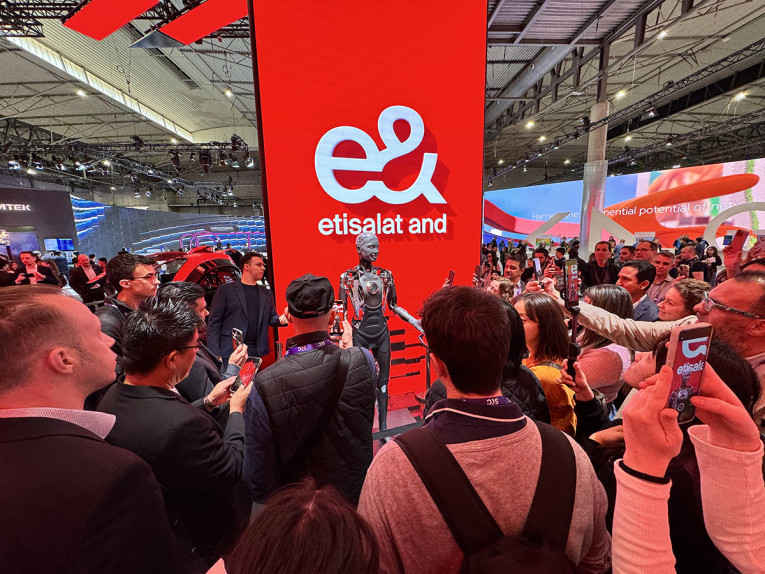
MWC 2024 has nearly returned to pre-pandemic size levels, closing with 101,000 attendees from 205 countries and territories entering the premises (the registration process for MWC is completely online and access control is done using a mobile app exclusively, so the numbers are supposedly accurate). As a comparison, MWC 2019 (the last pre-pandemic show) received more than 109,000 visitors from 198 countries. The exhibition area was smaller compared to 2019, and the booths also were smaller on average. But MWC 2024 had 2,700 exhibitors in total, compared to 2,400 exhibitors in 2019.
But unlike the pre-pandemic years, where there was a lot of excitement about audio, and we had nearly 100 audio companies exhibiting and attending, this year there were less than 20 audio-focused tech companies exhibiting. Not that audio is not present in virtually every booth, it's just that since smart speakers and voice faded away from being an industry buzz, there's been fewer reasons for audio companies to pay the extremely high price to attend a Mobile World Congress, with Barcelona having very expensive hotels during a trade show.
As John Hoffman, CEO of GSMA accentuates, "MWC Barcelona is undeniably the world’s largest and most influential connectivity event thanks to its unique combination of exhibition, conference, and the largest gathering of policymakers who enable the digital economy.” That's precisely one of the aspects that make MWC impactful. The fact that telecommunications is directly connected to government and country policies. Not surprisingly, more than 180 delegations from 140 countries, including two heads of state, over 70 ministers, and nearly 120 heads of regulatory authorities and over 40 intergovernmental organizations were in attendance. Also, not surprising, the US is nearly absent in these forums, and that's why the GSMA decided to promote a US version of MWC a few years ago.
This year's focus and trends for MWC were mainly to do with the very large concerns for the telecom operators that are still trying to see a return on their 5G investment and find ways to justify expanding 5G cellular networks. Particularly for European operators who are being restricted to only use technology from Ericsson and Nokia, while China subsidizes cheap network operations with its Huawei infrastructure for any country that doesn't mind selling out its sovereignty and the privacy of its citizens. Not surprisingly, countries such as Brazil and many South American and African delegations never needed to leave Hall 1 at MWC 2024. That was where Huawei had its own city (a gigantic hall...) with its own access control.
In fact, it is worth visiting MWC just to have an updated perspective of China's technology might at this point. China Mobile, China Telecom, and all the telecom giants and manufacturers from the region have the largest booths, the most impressive displays and the highest number of products on display. And Chinese companies felt comfortable displaying its power in Barcelona, where the trade show projects its influence well beyond Europe. So, when the GSMA highlighted technology trends such has AI and connected cars, it was clear that Chinese companies are at the cutting-edge of those areas. It's true that Google is everywhere at this show - also known as The Big Annual Android Show - but the reality is that the largest companies, starting with Korean Samsung, and almost every single Chinese tech brand only use the parts of Android that they need to, and they fork everything else. And Huawei and its consumer brand Human is even promoting its own operating system.
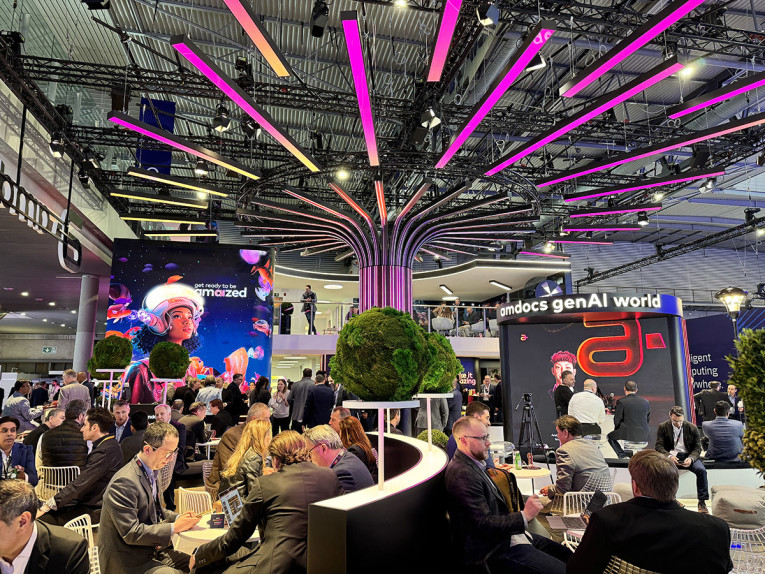
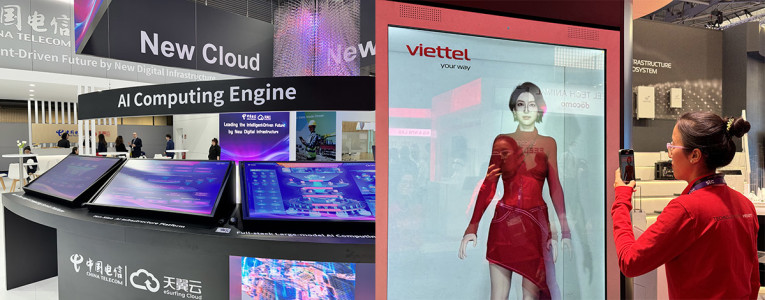
The Qualcomm Booth
The number one reason for audioXpress to attend MWC 2024 was the chance to meet Qualcomm and explore the gamut of technologies that the San Diego, CA-based company offers to the audio industry. This year, the company had a lot of things to show and of course we couldn't miss the opportunity to learn more about the Qualcomm S7 and S7 Pro Gen1 Snapdragon Sound platforms, which will soon power a new generation of advanced audio products.
Qualcomm also made an announcement for the show, revealing the first single-chip solution to integrate Wi-Fi 7, Bluetooth 5.4, and Ultra Wideband (UWB) technologies, the FastConnect 7900, which is ready to power new audio, low-power product designs using Bluetooth LE Audio, Qualcomm’s Expanded Personal Area Network (XPAN) technology (Wi-Fi, BLE convergence) and AI-enabled processing.
On the third day of MWC 2024 I interviewed John Turner, Senior Director, Product Management Voice and Music at Qualcomm Technologies International, to learn more about the Qualcomm S7 Pro (Qualcomm QCC7226 + QCP7321). That's a topic for another dedicated newsletter coming soon.
The new FastConnect 7900 is a new interesting Triple Combo solution. Triple "combos" have been around, but it used to mean Wi-Fi, Bluetooth, and “something else,” which would normally be ZigBee/Thread (Matter), NFC, or triple-band operation. Now it means Wi-Fi, Bluetooth... and UWB. And Qualcomm’s XPAND convergence shows an interesting proposition, where wireless technologies overlap, and the device itself switches seamlessly between protocols and services as required by the application in question, distance from the signal, and the environment conditions.
We have seen triple combo chips such as the Synaptics SYN4382 Triple Combo that offers Matter-compliant Wi-Fi 2.4/5/6/6E, Bluetooth 5.3, and IEEE 802.15.4 wireless, with the ability for simultaneous operation of two radios and multiple Bluetooth channels to stream multimedia content. This new state-of-the-art system-on-chip enables exciting new audio and video experiences, while lowering power consumption, cost, and system complexity.
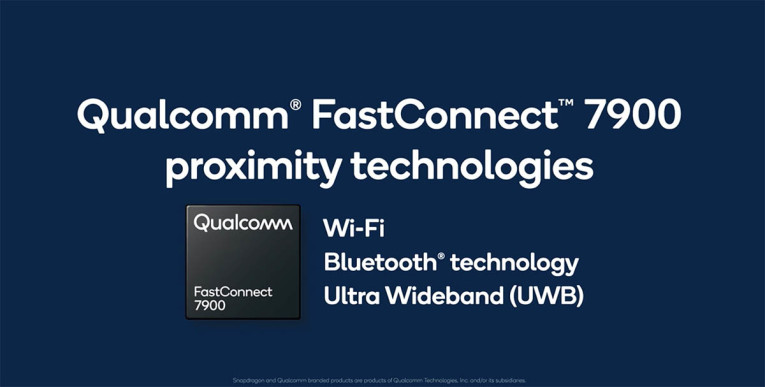
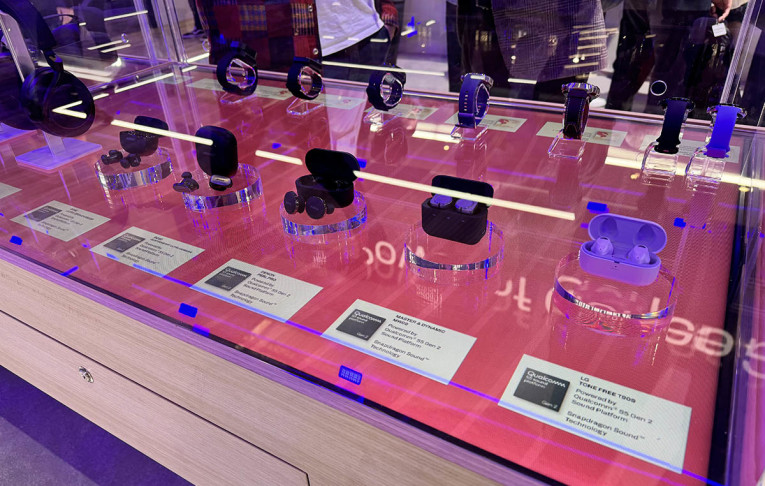
AI Will Sort It Out!
While AI was the buzz at MWC 2024, it was funny to hear some of the statements in the multiple keynotes and interventions from telecom operators regarding "the mistakes of 5G," or the fact that no one really knows why there should even be a 6G standard. While the metaverse and virtual reality didn't simply blossom the moment 5G was available, now these telecom companies are having trouble understanding why Apple is still restricting the Vision Pro AR/XR "spatial computing" goggles to Wi-Fi.
And not surprisingly, there was no mention of "voice," "virtual assistants," smart things, and all the buzzwords of 2019. You would think that in a telecom show "voice" would never go away. After all, most of the telecom companies were phone companies, right? Well, it seems that these days voice is just another share of traffic in the big data pipe. And a phone is no longer a "phone" and never mind the "smart." It's now just a screen. A user interface.
But AI is going to sort everything out was the message this year. Telecom networks will be managed by AI. Mobile devices will be revolutionized by AI. Customer service and other expendable costs will be purely managed by AI. There are now companies offering enterprise "services" that are completely based on generative AI engines, promising "digital spokesperson videos," and "conversational interfaces." So, if you thought talking to "an agent" that is located in a call center somewhere in India was bad, wait until your "service agent" becomes a Chinese chat bot.
And of course, all the telecom companies will develop their own AI engines and technologies, like in the past they said they would have their voice assistants and would build their own cloud services. Sure.
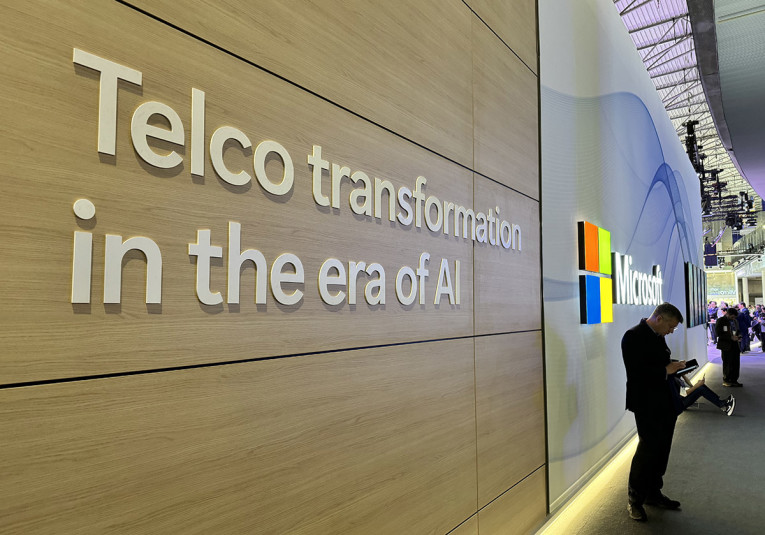

So, why attend a show like Mobile World Congress, a show that traditionally is a “telecommunications” and mobile device haven: The Big Annual Android Show? There are obviously all sorts of other technologies and many vendors of audio technologies for mobile phones, wearables, and smart devices exhibiting here. But the interest of visiting such a gigantic show like this has to do with one specific word: wireless. This is where everything that has no wires is unveiled first, including most of the chips that matter for audio applications.
Granted. This year it was all about AI. But so was CES in a way, and so will be all technology-oriented trade shows this year and the next, until reality falls over the hype. About 90% of the people attending this show say AI is the thing but have hardly tested ChatGPT or a similar engine and didn’t do anything useful with it. And 100% of exhibitors pretend they are doing something about AI, although they are basically also just playing with large language models and generative AI engines developed by someone else.
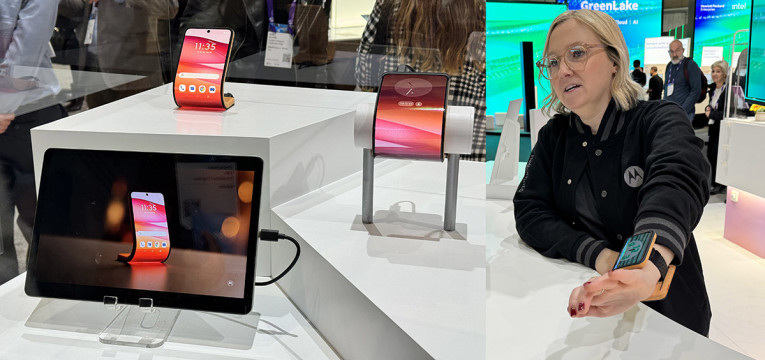
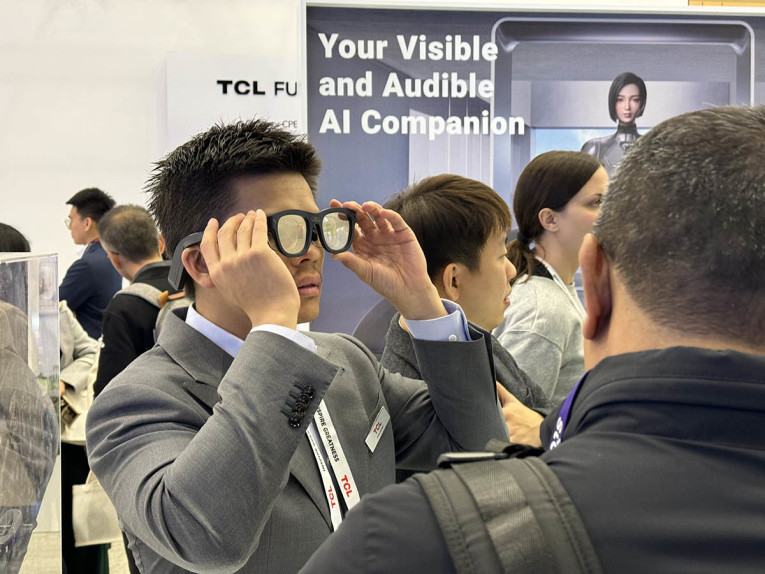
We’ve Been Here Before
Eight years ago, in line with the theme of the show - and the interest of GSMA, its promoting entity - it was all about 5G. Without it, there would be no virtual reality, no trains connecting people, remote surgeries with surgeons wearing VR goggles, no industry 2.0, and no civilization. A few years later, it was voice. Voice recognition and voice assistants - which were in reality the first sign that AI was actually happening. But Voice Personal Assistants were not that good, and the hype was put to rest, while thousands of companies that have devoted years of research and billions of USD in R&D to make voice happen, were left desperate.
And then openAI released chatGPT and unleashed hell over the world. About 50% of the companies now working on AI are going to try to come up with solutions to stop AI from causing havoc on democracy and civilization. And obviously AI is going to eventually enable better interactions using voice interfaces and actual virtual assistants. So, good thing we have 5G everywhere now...
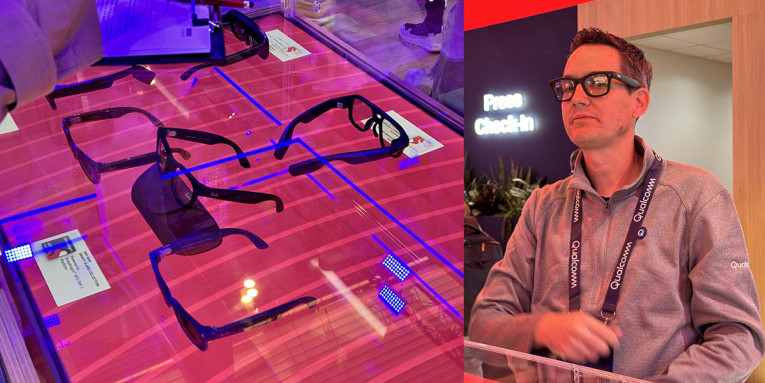
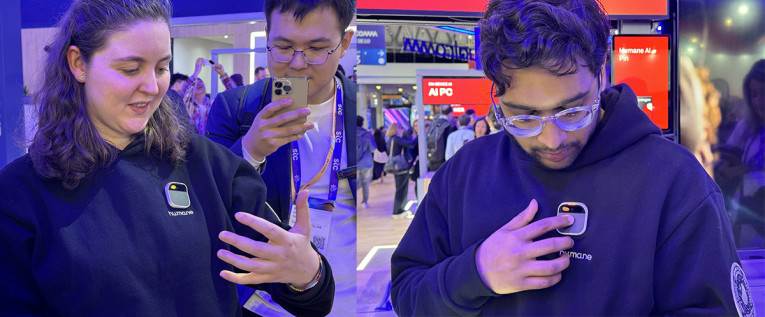
AI Glasses and Things
I saw the Humane AI Pin at Qualcomm and SK Telecom. This $699 "wearable" that is supposed to be shipping in April 2024 uses a completely voice-based interface to enable the things that we do already on a smartphone or a smart watch. It's like having ChatGPT on our chest. When the thing responds to what we asked, it can simply “talk," or the results can be "projected" to our hand or on the wall (yes there is a projector built-in). We control interactions with that projected screen with finger gestures and hand movements. And it comes with a hefty monthly fee ($24 in the US) for the "service" subscription...
The AI Pin is powered by a Qualcomm Snapdragon processor, and it runs its own operating system to connect users’ requests to different AI engines, depending on what is being asked. The subscription price is supposed to cover the "services" and the network connectivity. Humane is not considering streaming music and connecting TWS earbuds, which would seem obvious. Also the company needs help with the speaker that is supposed to be heard mainly by the user. And then there's service latency. When the thing speaks the results to our questions, we have already forgotten what we asked. The latency is so huge that we have time to look for the answer on an actual physical volume of the Encyclopedia.
For many of our readers still trying to decide between the merits of directional or omnidirectional speakers for their listening enjoyment, or trying to justify why they need a new headphone preamplifier to add to the other four they already have at home, it might seem that the world is crazy (and it is!).
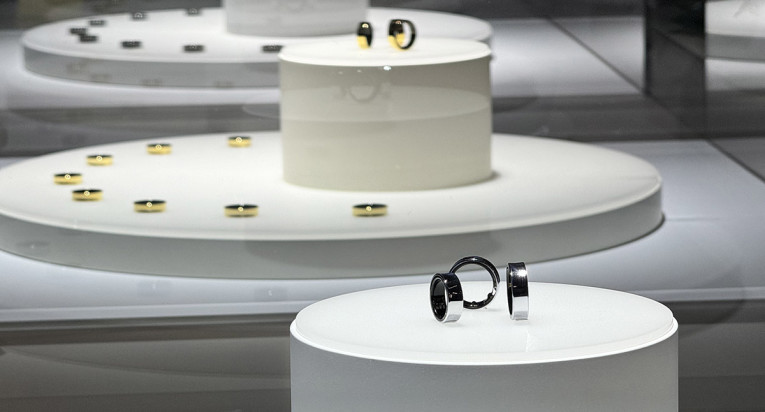
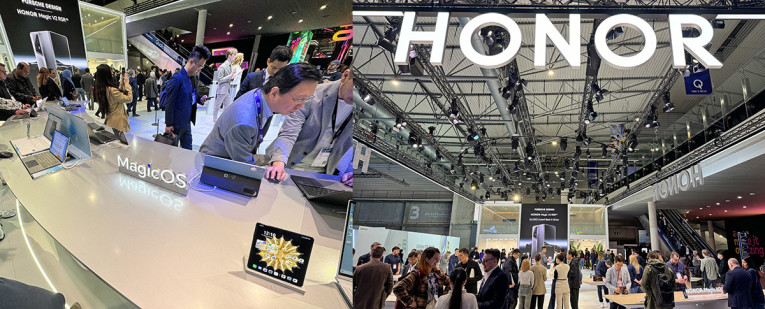
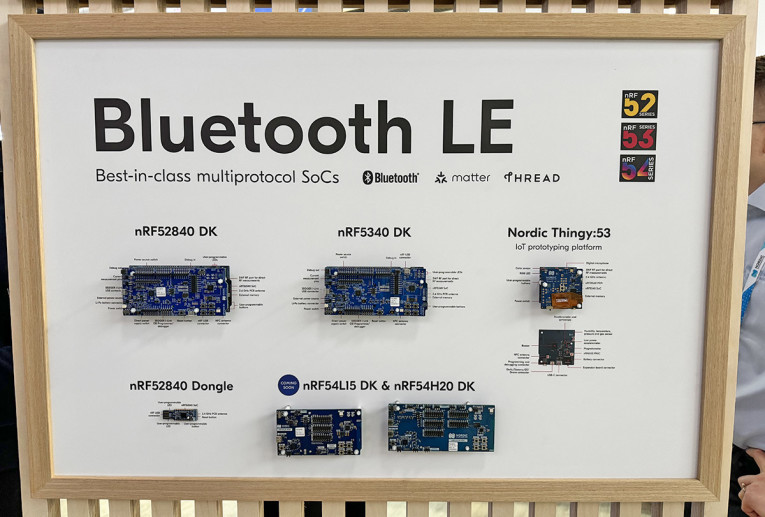
Network operators have a natural ambition to expand their range of services to distributed data centers (now they call it the "API" opportunity) and power all the processing required by AI. This will actually be needed, as the number of AI-powered services grows, it's only natural that more data centers will be required anyway. But when it comes to human interaction, current networks are not able to remove the big latency challenges. But, as we have discussed in audioXpress, many of the merits of current Machine Learning and generative AI technologies will be better used directly for very specific, dedicated processes and applications (such as adaptive audio DSP!), and most will run directly (and necessarily) on-device.
According to the latest study by ABI Research, "Generative Artificial Intelligence (AI) workloads have moved beyond the bounds of cloud environments and can now run on-device supported by implementing heterogeneous AI chipsets. Combined with an abstraction layer that can efficiently distribute AI workloads between processing architectures and compressed LLMs with under 15 billion parameters, these chipsets can enable enterprises and consumers to run generative AI inferencing locally."
Consequently, ABI Research estimates worldwide shipments of heterogeneous AI chipsets will reach many billions as laptops, smartphones, and other "mobile" form factors will increasingly ship with on-device AI capabilities. "Cloud deployment will act as a bottleneck for generative AI to scale due to concerns about data privacy, latency, and networking costs. Solving these challenges requires moving AI inferencing closer to the end-user – this is where on-device AI has a clear value proposition as it eliminates these risks and can more effectively scale productivity-enhancing AI applications,” says Paul Schell, Industry Analyst at ABI Research. “What’s new is the generative AI workloads running on heterogenous chipsets, which distribute workloads at the hardware level between CPU, GPU, and NPU. Qualcomm, MediaTek, and Google were the first movers in this space, as all three are producing chipsets running LLMs on-device. Intel and AMD lead in the PC space."
And this is very visible at a show like MWC 2024, where everyone was trying to show some form of AI on-device, when actually sending requests to engines running on some server at the show (in the best case) or somewhere remote. One of the trending categories for this year was smart watches and glasses. Everyone had one - or 10 different new models, as it is customary from Chinese companies.
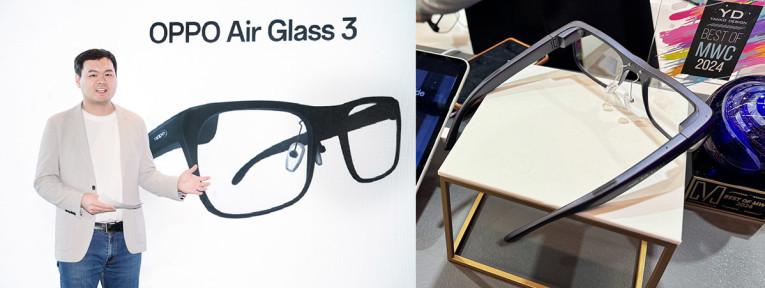
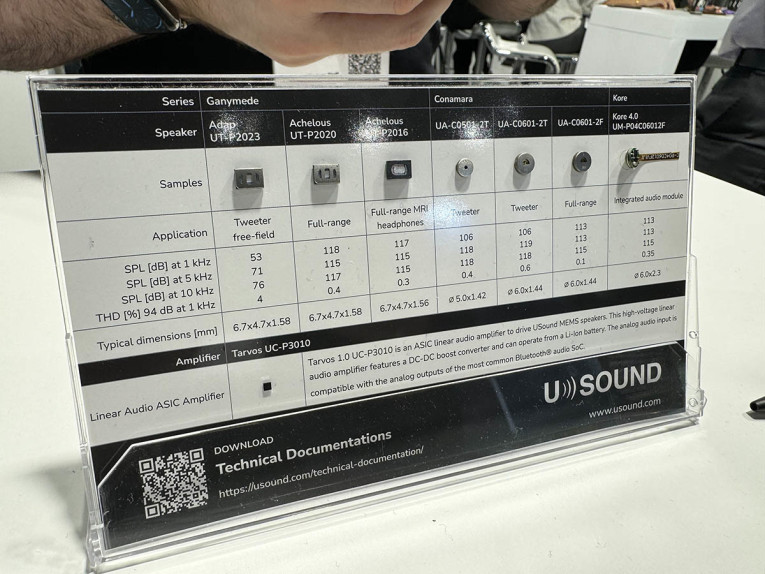
At the 4YFN (4 Years from Now) startup zone of the show - a great environment for networking activities - I couldn't find many audio companies present, unlike in previous years. I did find a few companies that shouldn't be there because I doubt they should be considered “startups.” But the number of software and AI-focused companies was simply impressive.
OPPO was one of the companies that had a booth at the MWC 4YFN startup area to engage with developers. And they were demonstrating their OPPO Air Glass 3, which is supposed to add "innovative initiatives in the era of AI". For now, it's just a clumsy design, with the same well-understood problems. Speakers are extremely poor and any attempt to read what is displayed on the glasses requires crossing your eyes to even discern whatever is being shown, which makes these designs useless. And anyway, as with audio streaming, all these devices run AI models on connect smartphones. I found it interesting that OPPO claims to have "filed over 3,160 global patents related to AI." And OPPO is also working with Qualcomm, Google, Microsoft, and other partners to "explore AI technology to enhance user experience on different devices."
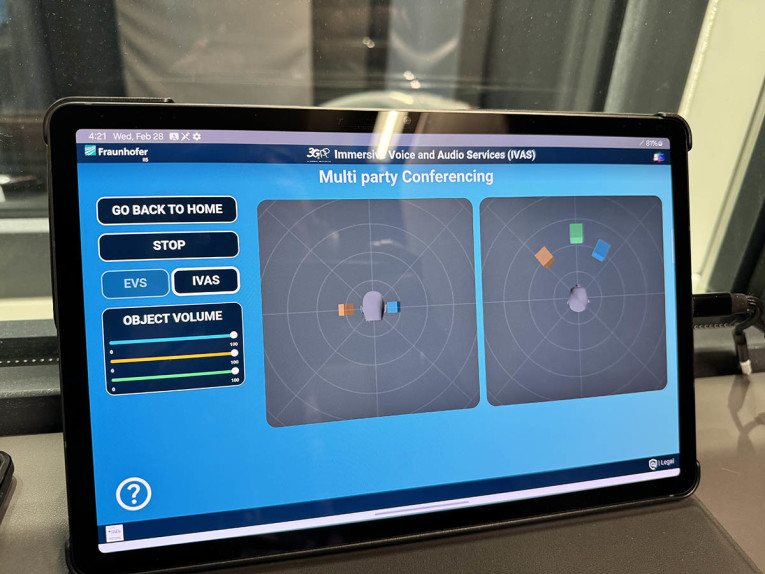
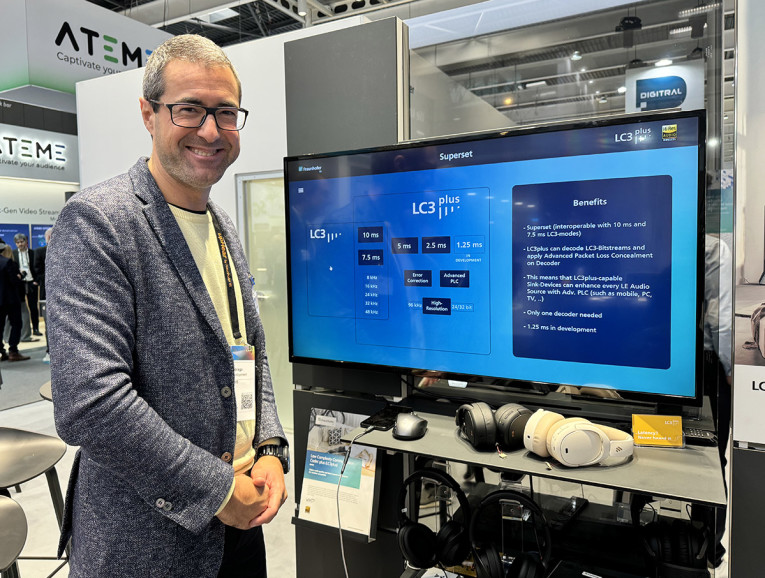
Another trend at MWC 2024 were the timid efforts from many mobile technology companies to have something that remotely resembles the Apple Vision Pro augmented reality platform and form factor. After many years where those companies were perfectly content to have demonstrations of VR goggles from the leading players in their booths (merely part of the "it's the future" vibe), now they are actually worried that they need to invest and copy whatever it is that Apple (and Facebook) did. I counted many "Vision Pro" clones at MWC 2024, which of course were merely displays. But I did see people at the show actually using the Apple Vision Pro platform to have meetings while sitting at one of the restaurants or at one of the booths. So, it’s actually a thing.
In the next two years, this is going to mean a welcome boon in business for Qualcomm, Mediatek, and all the chip companies, plus obviously all the display makers. And of course, all the "spatial computing" platforms will want to have "Spatial Audio." So, I was surprised that there weren't more visible presences of microphone and transducer companies at this MWC (with actual exhibits and not just meeting rooms). Apart from USound, there was no other booth to visit. I guess this will change in 2025.
The GSMA promotes MWC Shanghai between June 26-28, 2024; followed by MWC Las Vegas from October 8-10, 2024; and MWC Kigali from October 29-31, 2024. MWC Barcelona 2025 returns to the Fira between March 3-6, 2025. aX
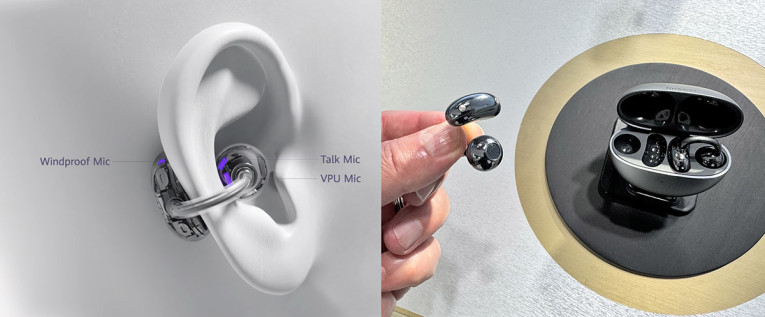
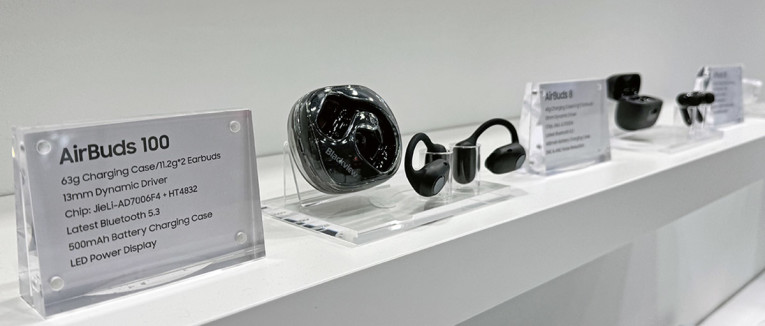
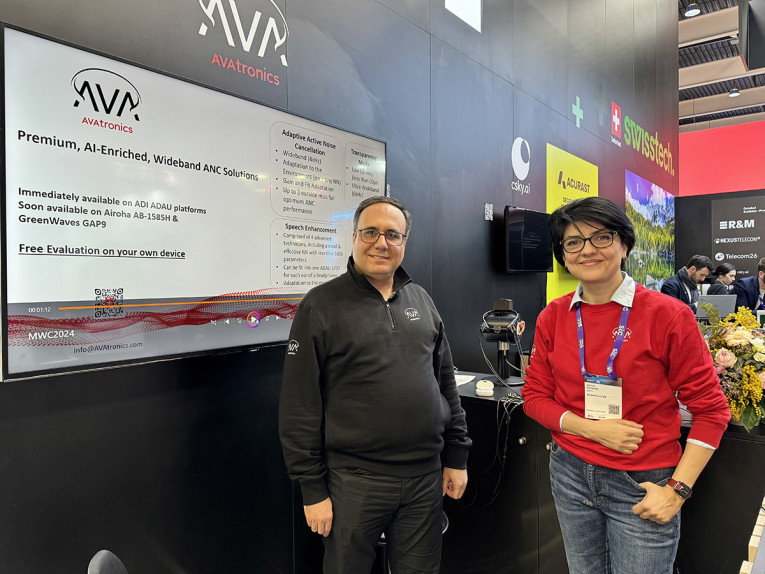
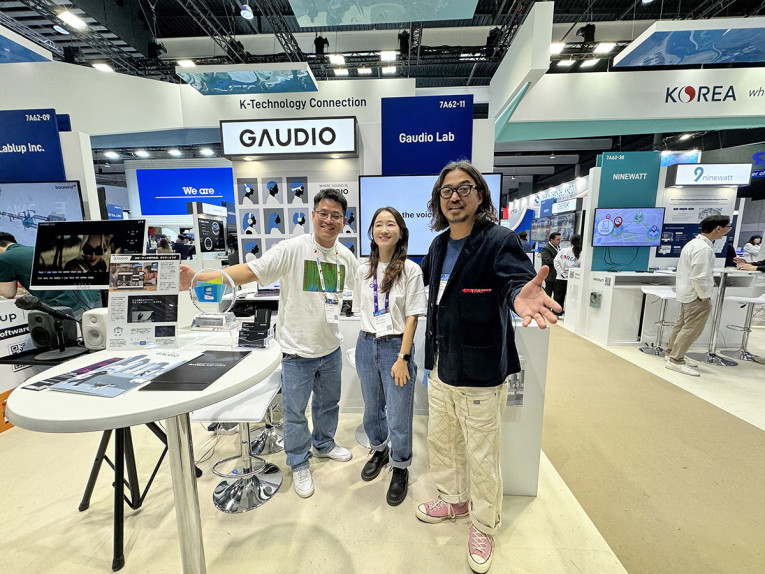
This article was originally published in The Audio Voice newsletter, (#459), March 7, 2024.




